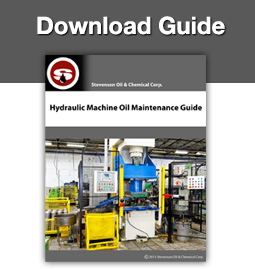Sun Microstamping Technologies is a company specializing in high-speed, progressive stamping – supplying the automotive, medical/dental, and lithium-battery markets as well as several other industries with stamped products for their needs.
As the company has matured, their equipment began to age and not work as efficiently as before. Particularly, their lubricant applicators were aging and there was a light fog over the shop floor – a fog caused by oil mist – which was not healthy for inhalation and had the potential to cause safety issues as well with production runs. Vice President of Operations Steve McKenzie assigned Manufacturing Manager Mike Erodenko and Toolroom Manager Mike Brennan the tremendous task of finding a more economical and dependable applicator system, as well as a method to reduce associated costs. Setting off at a brisk pace, Erodenko sought to replace the fading pneumatic mist oilers that were used to lubricate dies running in the company’s 48 high-speed presses.
As the article on Metalforming Magazine.com explains it according to Erodenko, “We had several of the old-style oilers,” he says, “and while they were able to spray intermittently, we struggled to make them operate that way. So, they stayed on all of the time, flooding our dies with atomized oil that ran all over the tools, presses and onto the floor. The pressroom looked and smelled bad, not to mention how much lubricant was being wasted and the time and costs associated with cleanup. With the help of our local distributor, Randy Whiteside (Press Masters, Smyrna, GA), we hooked up with Minster to help with the press repairs, and with Pax (Celina, OH) to upgrade our die-lube systems.”
With Pax and Minster providing consultative guidance in their areas of expertise, things began to change in great ways for Sun. Improvements in lubricant and lube technology that have made big differences for the company included advancing a lubrication application on the shop floor via a one-system solution that can work with all three of the lubricants Sun uses on a regular basis – a vanishing oil, a middle-grade heavier lubricant, and a heavy 940-SUS viscosity oil. Pax provided an airless spray system that is designed for vanishing oils but can spray heavier oils. Sun has since incorporated this technology onto 18 of its presses.
Along with many time benefits that keep the shop floor humming along now without unnecessary halts for lubrication exchanges, Erodenko sees a general improvement in most of the day-to-day operations that depend on lubrication. “We’re getting much better control of where we’re applying the lubricant,” Erodenko continues, “and use several different nozzle designs based on whether we want a wide spray, pinpoint spray, or something in between. While before we were flooding the tools, now we get the lube—without excess—in the right place at the right time.”
Although many manufacturers are hesitant to spend big bucks on shop floor improvements, Sun is a shining example of the benefits that come from updating technologies that address lubricant applications. Being penny-wise and pound-foolish is a short-sighted option in today’s economy.
Contact Stevenson Oil today to learn how we can support your business. For example, we offer Alemite lubrication equipment and fittings.


